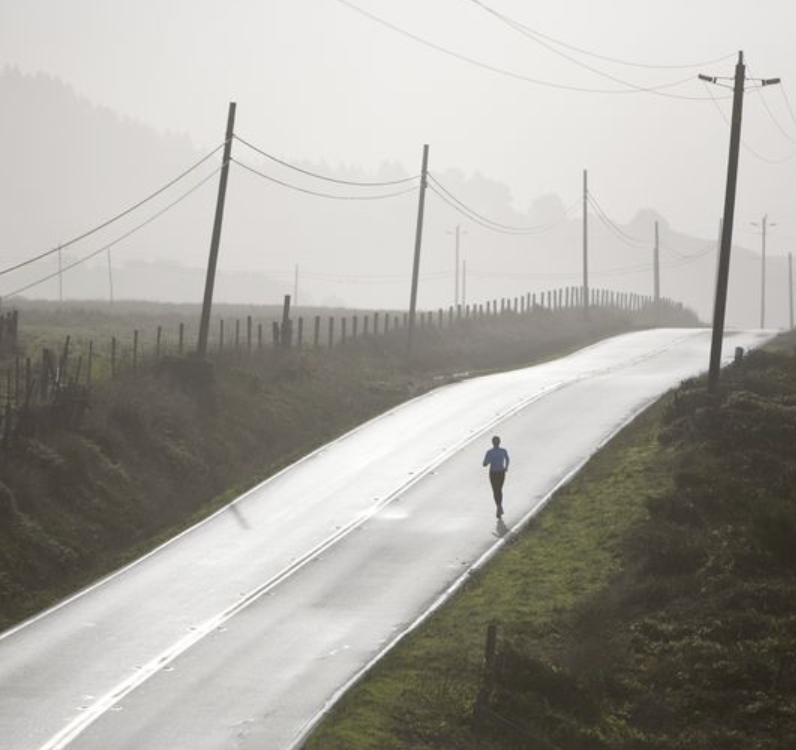The Key to a Strong Base: Lydiard's 'Cascade of Aerobic Efforts'
Long Slow Distance (LSD) as a methodology is attributed to the father of periodized training: Arthur Lydiard. Here’s a short reminder of the concept: if we exercise at ~ 60% of maximum effort for 2-4 months, deliberately excluding anaerobic work of any kind, we will build an aerobic condition, or base fitness, from which all quality training can safely spring and progress.
Well, yes and no. For an athlete going through their first or second season of training and racing, this alone will produce results. But Lydiard had his athletes perform, “a cascade of aerobic efforts” and short time-trials during their winter base-building months. Lydiard uses a terminology of fractions to describe perceived efforts (“¼”, “½”, “¾” etc.), so here is a sample-week of this, “cascade of aerobic efforts,” and time trials, translated to more universal terms.
Aerobic Conditioning Week 9 (for example)
Monday, 45mins recovery effort
Tuesday, 85mins conversational pace w/ 4-8 20-second surges
Wednesday, 45min Recovery Fartlek conversational-to-marathon pace
Thursday, 75mins conversational pace w/ 4-8 20-second surges
Friday, 45mins recovery effort
Saturday, Out & Back Run | 31mins out at conversational pace + 29mins back at marathon pace) OR 5k-10k time-trial
Sunday, 2hrs recovery-to-conversational pace w/ 4-8 20-second surges
Let’s take a look at what we are getting from this type of 8-hour aerobic conditioning week.
Lots of jogging on recovery days and easy, conversational pace on longer duration days. Everything fits the LSD bill so far.
But then we notice the ample surges (or strides), which Lydiard’s athletes performed year-round. These are very swift and powerful accelerations leading to ~92-95% of maximum effort for 8 seconds, followed by a controlled deceleration. They are known as “alactic strides” because their extreme brevity followed by extreme recovery precludes the formulation of hydrogen ions that we typically attribute to lactic acid formation. Interesting stuff. A way to develop/maintain speed without high-intensity work eroding the aerobic condition? Lydiard’s professional athletes were performing as many as 30 strides each week during their base building phases.
Then there is the “Recovery Fartlek” and “Out & Back” runs. The classic recovery fartlek is jogging up into the Swedish hills and driving the knees high on each ascent. But at the tops, on the descents, and on the flats ,the athlete drops to a jog again, or even a walk, commuting along to the next prominent hill. When the body feels loose, the athlete calls it a day and shuffles off to a sauna and some cured salmon. So while this session is defined by its regenerative qualities, perhaps counter-intuitively, the intensity ranges from a jog up to marathon effort. The Out & Back is used as a kind of gut-check to see how the body is responding to training. It is also a pacing awareness component of each week as well as a way to touch base with the athlete’s high end of their aerobic range; coming back faster than they went out. Flying further in the face of LSD, we see additional components to Lydiard’s “cascade of aerobic efforts” coming into view.
Arthur Lydiard, 1917-2004
And lastly, a glaring conflict with the ideology of LSD is the 5k-10k time trial on Saturday. Granted, this fitness test will not be a part of every week, but we better believe that these athletes were episodically throwing down even during their aerobic conditioning phases. How else was Lydiard to know whether they were approaching diminishing returns from aerobic conditioning? Proven countless times by athletes that developed far beyond their perceived limits, Lydiard’s athletes paid the utmost respect to the concept that too much quality running during base building (or at any time really) can pause or erode an athlete's development from the ground up. “Ground” meaning “base” meaning ”aerobic condition”. And if the aerobic condition goes, the road to comeback is LONG.
In summary: following a typical aerobic conditioning week of training from “the father of LSD,” Arthur Lydiard, an athlete actually accrues training time in zones 1-5. Zone 1 is touched on with recovery efforts. Zone 2 with medium-long sessions and endurance sessions. Z3 with Recovery Fartleks and Out & Back sessions. Zones 4 and 5 with the occasional time trial.
Has your base training left something to be desired in the past? Are you starting to program your Winter months of training? A low-key consultation with one of our endurance coaches can help you find more nuance in your base training practices. Happy fall running!
Nathan Toben
Distance Running Coach
nathan@theendurancecollective.com


